Barrio Chino in Buenos Aires, may feel miniature in comparison to her Chinatown sisters in New York, San Francisco, or London, but it still has quite a bit to offer.
Buenos Aires’s small but mighty Barrio Chino is located within Belgrano, a neighborhood on the north side of the city.
And recently it has become a major dining hub with a previous alleyway lining the train tracks being developed into a row of stylish restaurant, cafes and bars.
Come for authentic Asian cuisine (of which there is not much on offer in Buenos Aires), to shop for imported goods you miss from home, or for lunch or happy hour at one of the new hot spots popping up here.
Here’s how to visit Barrio Chino in Buenos Aires.
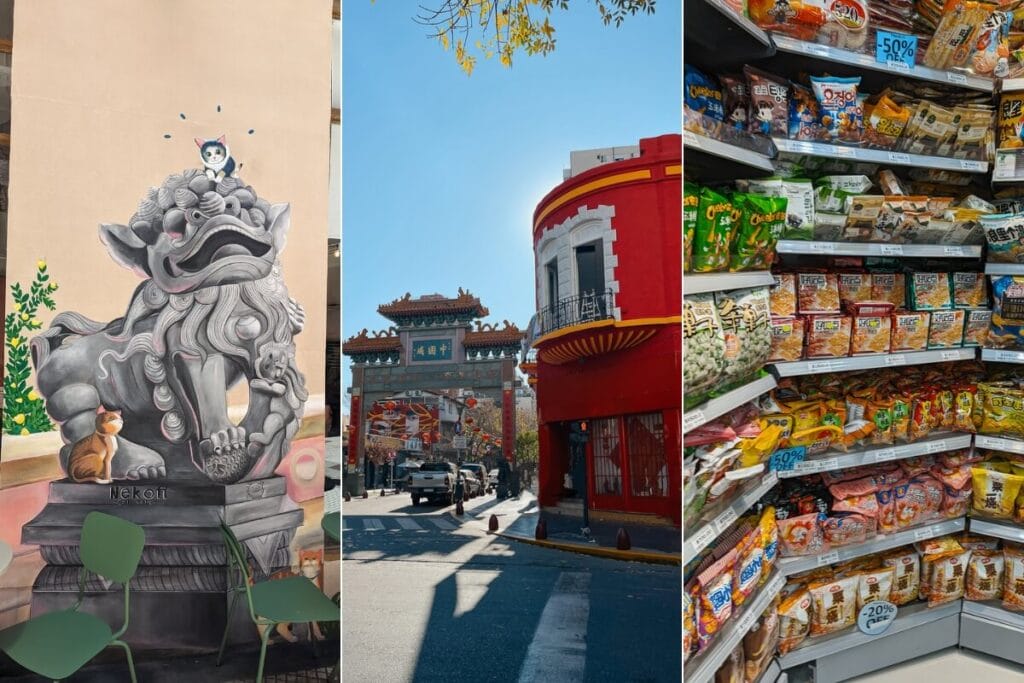
QUICK NOTE: This post contains affiliate links and Sol Salute may receive a commission for purchases made through these links, at no extra cost to you.
Visit Chinatown in Buenos Aires
Any visit to Chinatown in Buenos Aires begins by passing through imposing arch (below).
The arch marks the neighborhood entrance at the intersection of Juramento and Arribeños streets, just across the street from the Belgrano C train station.
It only occupies about four blocks of Arribeños and branches off this main artery in each direction for a block or two.
Plans were announced to expand Barrio Chino but I haven’t seen anything changing yet except for the food scene (which has nothing to do with Chinatown in a cultural sense).

History of Buenos AIres’ Barrio Chino
The Chinatown in Buenos Aires is relatively new, beginning in the 1980’s with the arrival of immigrants to the area.
Despite the name Barrio Chino, the majority of the residents are actually Taiwanese.
The arch (seen above) was installed in 2009 after being shipped in pieces directly from China as a gift from the Chinese government.
Many didn’t initially support the new addition to the neighborhood.
There are actually still ongoing formal complaints from two local government agencies regarding the arch and neighbors complained about “not being consulted.”
Some still complain despite the area’s rising home values.
There are also different opinions from the Asian population in the neighborhood.
While some appreciate the arch as a sign of acceptance in their new home, many (especially the Taiwanese majority) aren’t as comfortable with the presence of a gift from the People’s Republic of China in their new Argentine home.
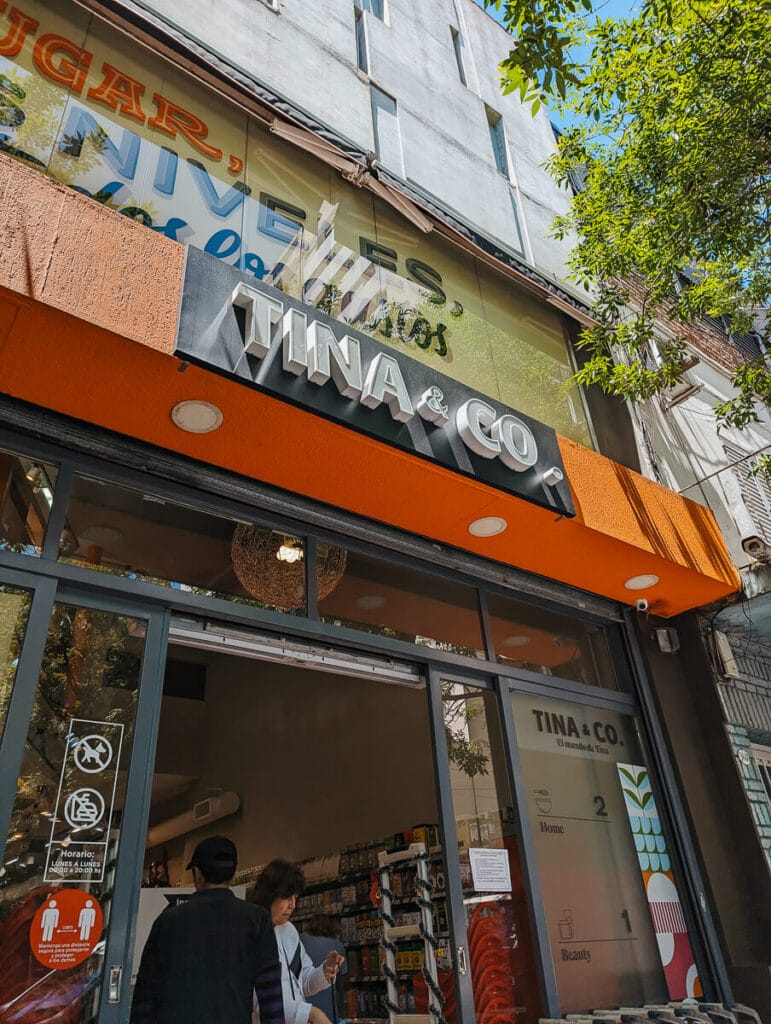

Where to shop in Chinatown, Buenos AIres
Spices, fish, imported goods, grains in bulk, whatever you’re looking for, it’s probably available in Barrio Chino.
With Argentina’s strict import regulations it can be hard to find a lot of food stuffs and Barrio Chino is the go to for most when looking for the hard to find.
The shops in Chinatown in Buenos Aires are open from around 9 am to 9 pm.
The supermarkets here offer a much wider variety of options than your average Argentine grocery store.
My husband goes for the fresh fish that’s cheaper and fresher than the chain stores.
I go for cheaper grains and imports and to try new things.
My favorite two shops are Casa China and Tina & Co.
There are also bazaars selling a little bit of everything under the sun, knick-knacks of all sorts including cheap toys, art supplies, and kitchen wares.
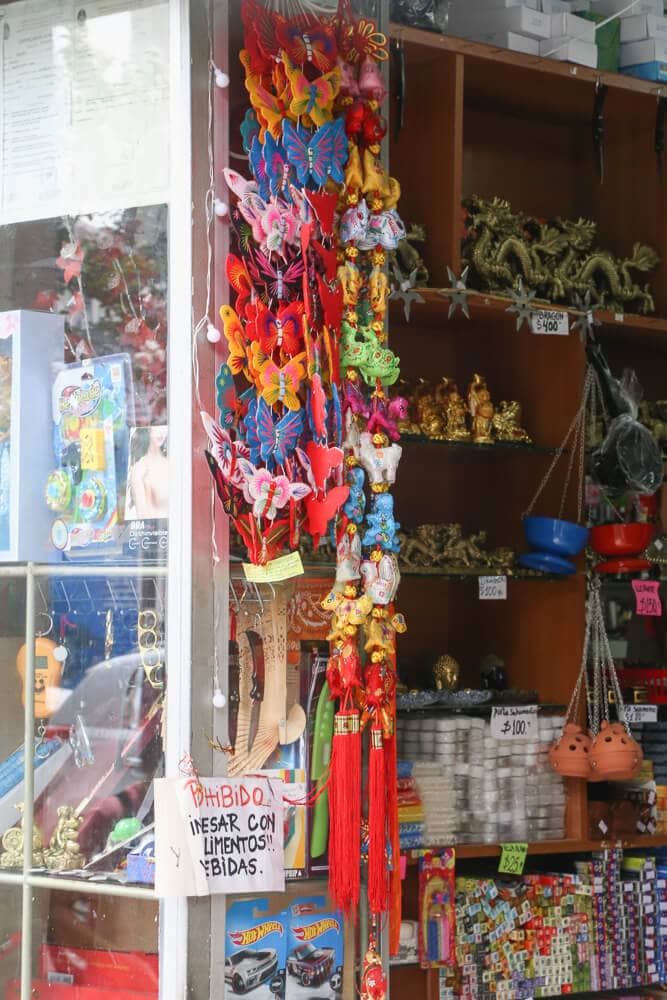


Casa China
I do most of my shopping at Casa China at Arribeños 2173, but there are a few similar markets on the neighboring blocks.
Casa China was one of the first supermarkets in the neighborhood.
You can purchase quinoa, legumes and the like in bulk (seen below) for a very reasonable price.
Vegans and vegetarians will also be very much at home with tofu, vegan hamburger patties, vegan butter, vegan ice cream and more available.
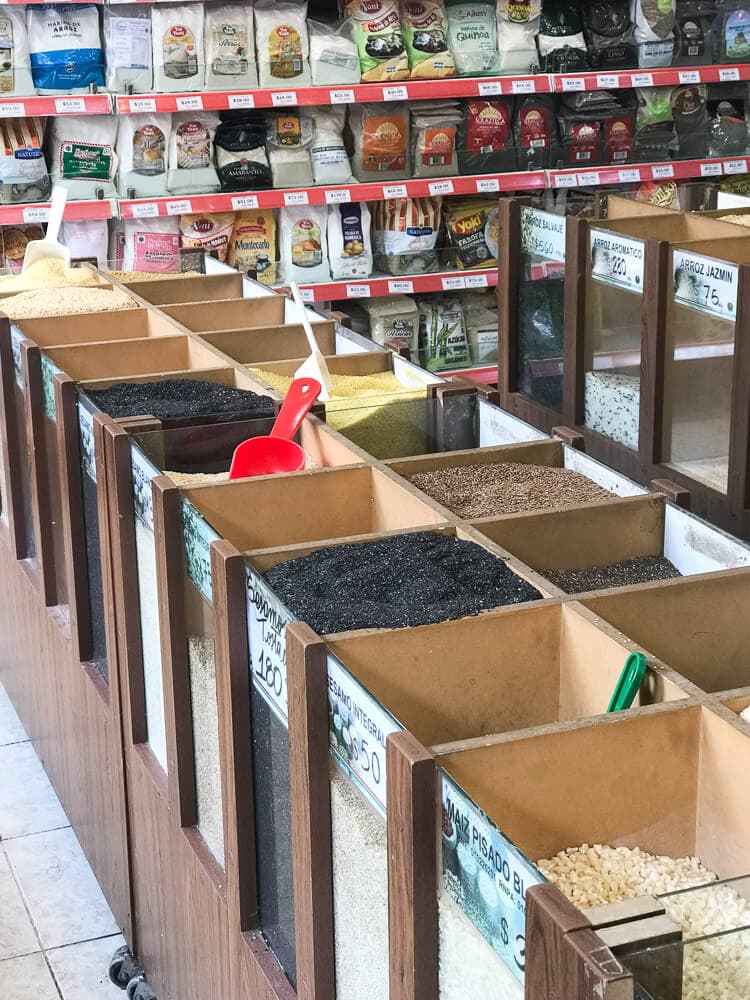

Tina & Co
Tina & Co, at Mendoza 1678, has everything.
It has many of the same things that Casa China offers, but it’s usually more expensive.
Rather than selling quinoa or rice in bulk, they sell it pre-packaged so it’s a little pricier for those items.
They have the widest variety of imported food options that I’ve seen anywhere in the city, so whatever you’re looking for, start your search here.
Whether you’re looking for a very specific brand of tea or a soda you liked that time you were in Brazil, you’ll probably find it here.
On the ground floor you’ll find the groceries with everything from vegan cheese to a massive imported tea selection.
Go to the first floor for imported snacks, candies, and beauty supplies.
Further up there is a cafe and home decor.
There is an elevator for those with strollers or mobility issues.

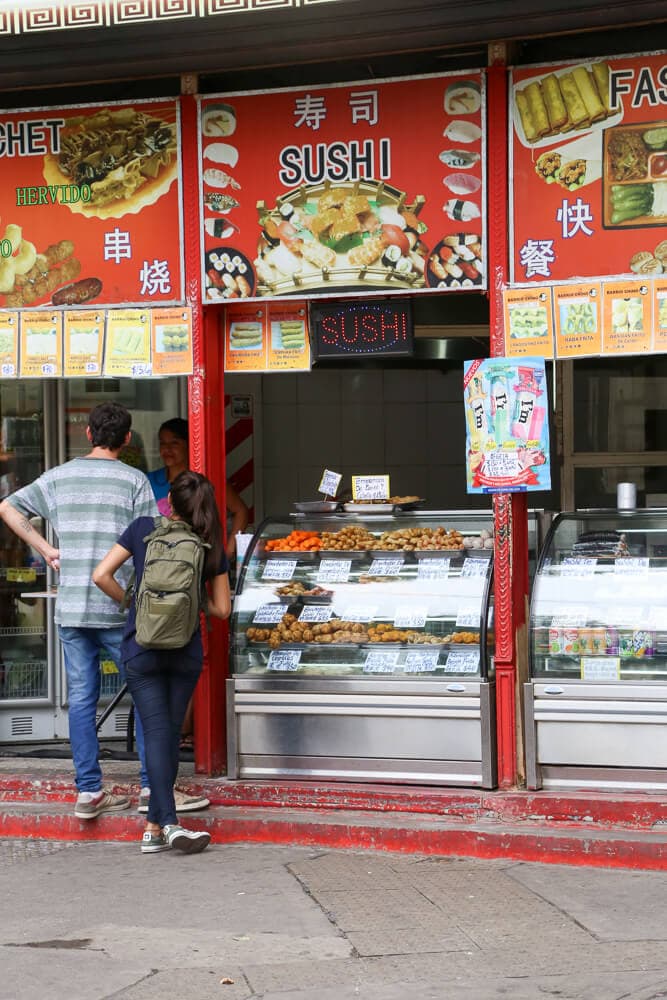
Street Food in Buenos Aires’ Chinatown
Restaurants open from noon and stay open late into the night.
Street food is very popular and most restaurants have counters facing the street for those eating on the go.
There are benches to sit and enjoy as well.
Enjoy some sushi or tempura during your visit!

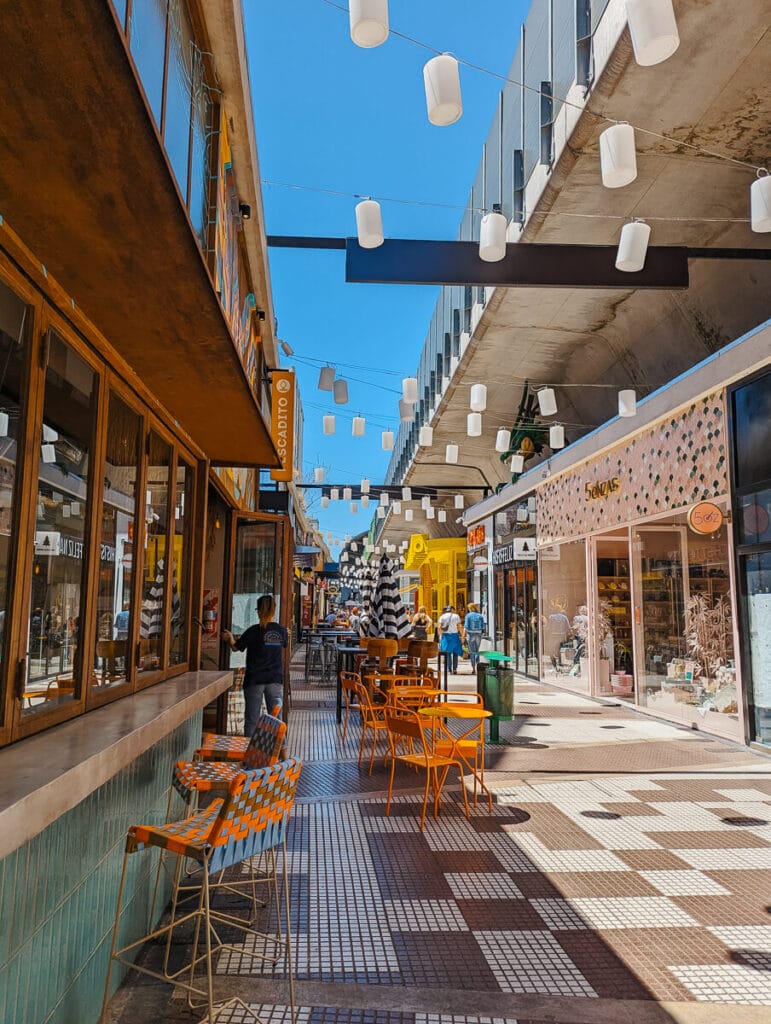
The Food Scene: Pasaje Echeverria & Paseo Via Viva
In 2023 the food scene in Barrio Chino exploded, but not with Chinese food.
A few years ago the train station here, Belgrano C, was completely overhauled and risen overhead.
This is the exact opposite of the New York High Line. The train was lifted and the previously neglected real estate that bordered the train tracks was gentrified into cafes, bars, and restaurants.
At lunch it booms with people on their lunch break, happy hour picks up at around 7 and bleeds into dinner.
There are two different food hubs here but they’re indistinguishable, to be honest.
First came Pasaje Echeverria, the pedestrian alleyway right at the entrance to the station. It occupies the two blocks between Juramento to Sucre streets.
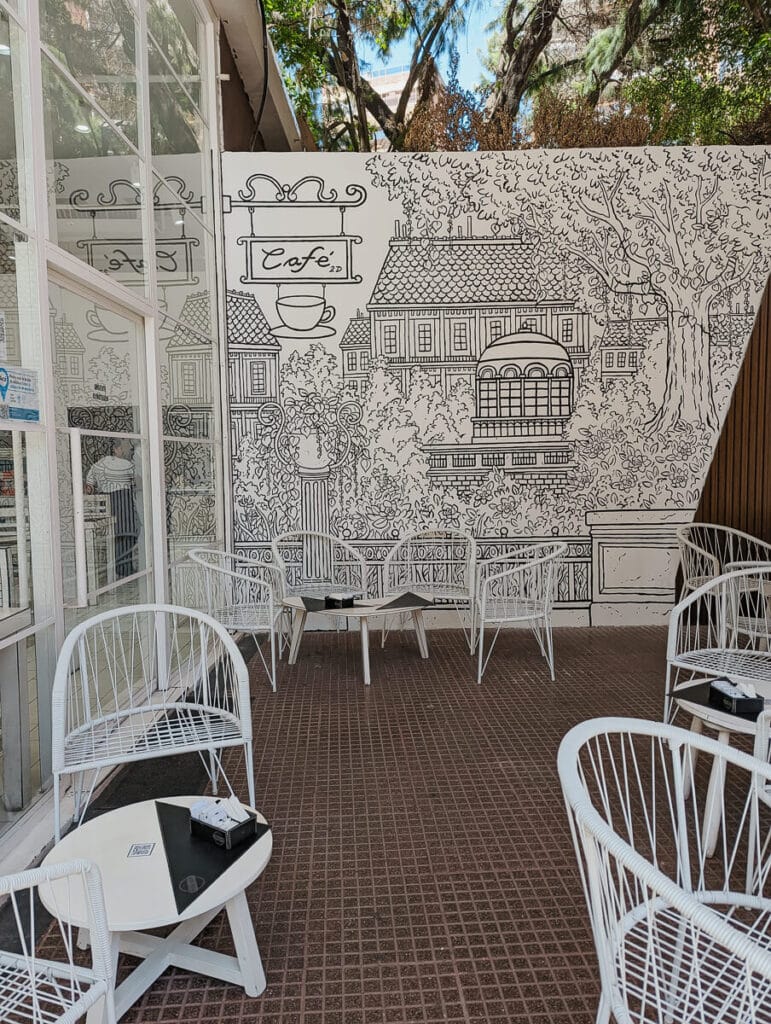
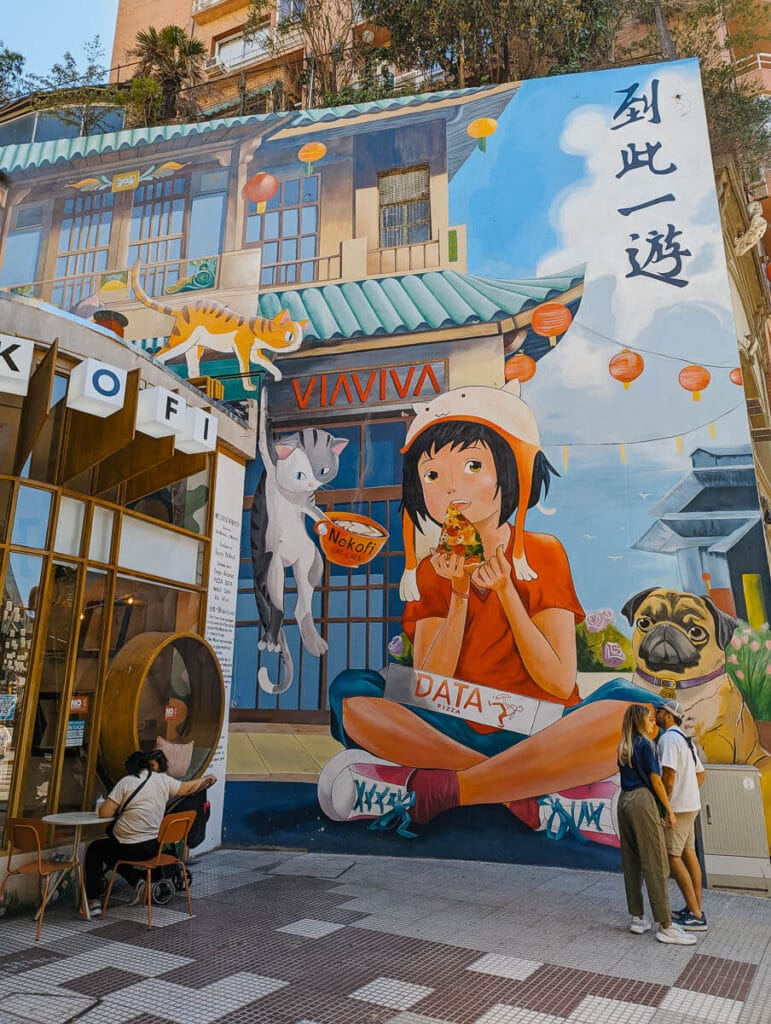
Then the next stretch of alleyway was developed into what is now VIA VIVA, starting to the left of the Chinatown arch and bordering the train tracks for a couple blocks.
The Via Viva section does feel a bit more inviting with restaurants on both sides of the alley and plenty of outdoor dining, it is a very see and be seen area at night.
You’ll find it all from international cuisine, cafes, cocktail bars, and specialty ice creameries.
I’ve marked both of these food hubs on the map at the end of the post.
How to Get to Barrio chino
- Train | The train station, Belgrano C, just across the street from the arch belongs to the Tigre train line that departs from the Retiro train station. If you’re coming from downtown (near San Telmo, Plaza de Mayo or Retiro), this the quickest option for you.
- Subte | Take Line D to the Juramento stop, you’ll come above ground at the intersection of Juramento & Cabildo. From here it’s about a six-block walk down Juramento. And it’s a beautiful walk, enjoy it!
- Bus | There’s a lot of colectivos that can bring you to Barrio Chino. If you prefer to take the bus I recommend mapping your route out on the city government’s online map (or download the app version, Como Llego, to your phone).
- Taxi | Taxis and rideshares are very affordable in Buenos Aires, take the easy way and call an Uber or Cabify.
- Read my post about the best apps to use in Buenos Aires to learn how to navigate the city.

Chinatown, Buenos Aires Map
Below is a map of the official borders, you can see that Chinatown in Buenos Aires is a TINY neighborhood.
However, it does actually expand out further than these official lines (albeit not too much).
The purple line is Pasaje Echeverria and the green line marks VIA VIVA.
Argentina Travel Resources
- BOOK A CONSULTATION | I offer one-on-one travel consultations to help you plan your trip to Argentina. Pick my brain to get a local’s insight. Click here for more information.
- MY MAP | Buy my interactive map with 300+ pins to have access to the city as I see it. It is an invaluable resource. See more here about how it works.
- AIRPORT TRANSFERS | Having a driver waiting for you is ideal for a stress free arrival, Welcome Pickups is the best option for a driver from Ezeiza or Aeroparque.
- TRAVEL INSURANCE | Always travel insured. Anything can happen anywhere and it is scarier and costlier in an unfamiliar country. SafetyWing’s Essential Plan covers unexpected travel and medical emergencies and even offers add-ons like electronics theft or adventure sports. It is the best if you’re coming on vacation. If you’re coming as a digital nomad or an extended stay, you need their Complete Nomad Plan which also covers routine check ups, maternity, mental healthcare and more. Read more: Health Insurance in Argentina
- PHONE PLAN | These days, traveling with data is essential. Especially in Argentina where everything is managed on Instagram and WhatsApp. I recommend this E-SIM card. It’s hassle-free and affordable, for more read how to get an Argentina sim card.
- ACCOMMODATION IN ARGENTINA | booking.com is the most common hotel site used in Argentina and it’s where you’ll find the most options.
- RENTAL CARS | I love to travel Argentina via road trip, Discover Cars is a great platform to compare different rates and providers.
- BUS TICKETS | Check Busbud for long distance bus routes and tickets.
- VPN | If you’ll be using a public WiFi connection and want to secure your data, I highly recommend using a VPN, I personally use and have had a good experience with ExpressVPN. I also use it to access Hulu and American Netflix from Argentina.
- FLIGHTS | Always check Google Flights and Skyscanner for flights to and within Argentina. Aerolineas Argentina is the local airline with the most routes. FlyBondi and Jetsmart are two budget airlines with dirt-cheap prices (but expect to pay for every add-on like luggage).



would you please tell me if I can buy some dry seafood in the Chinatown.
Thanks
I don’t know, sorry!